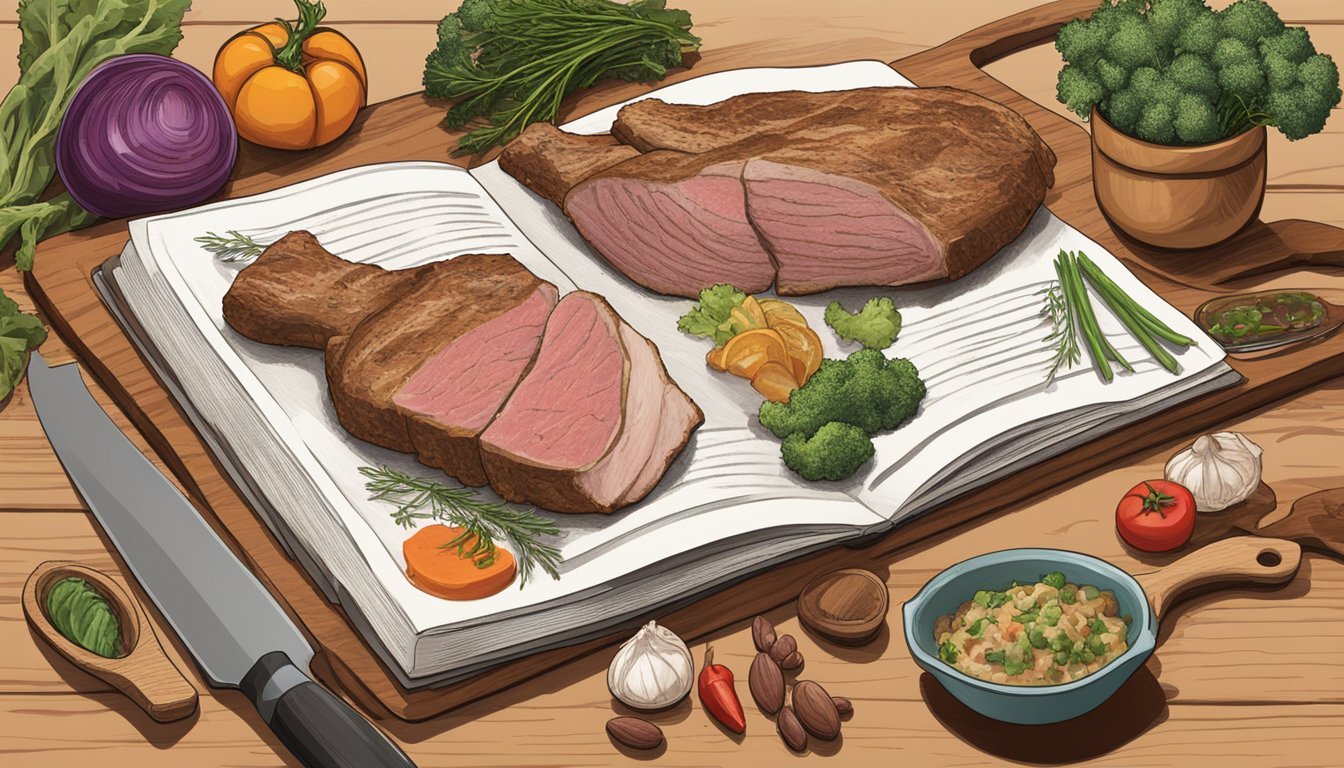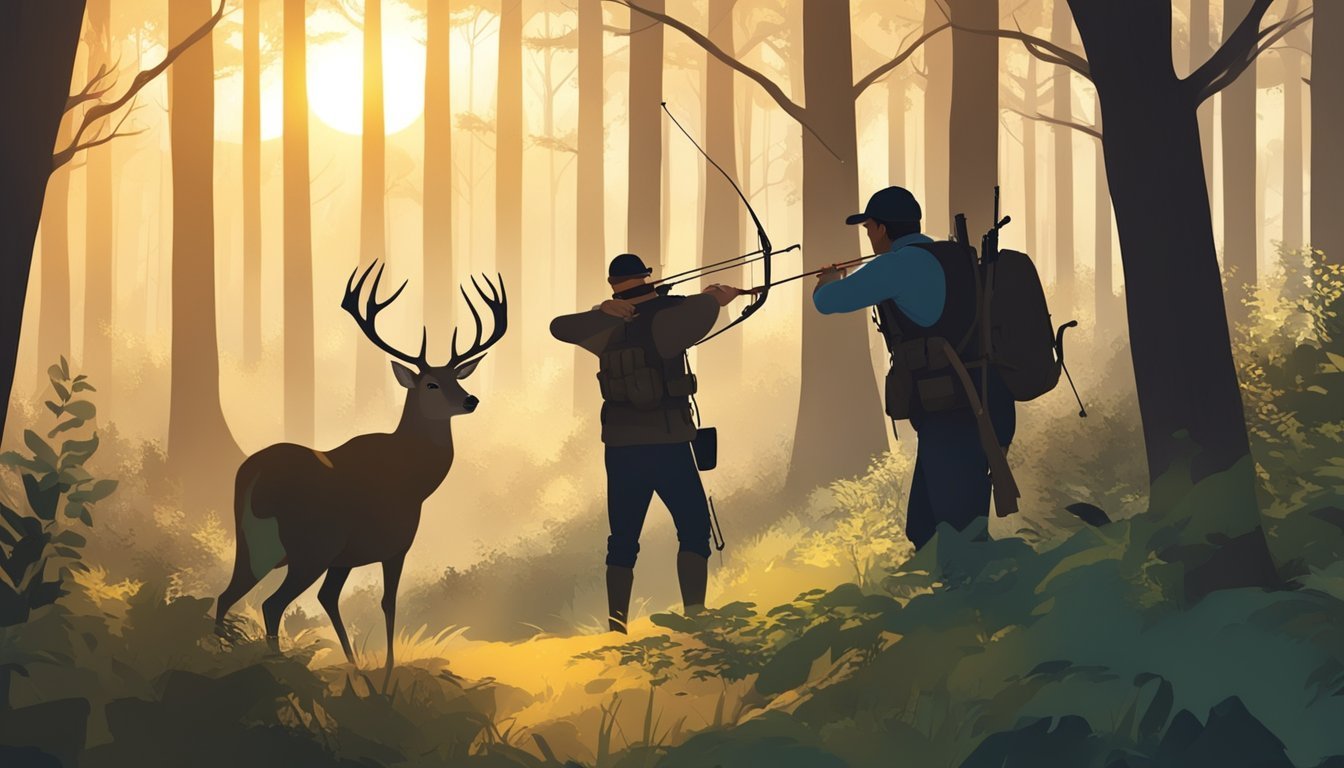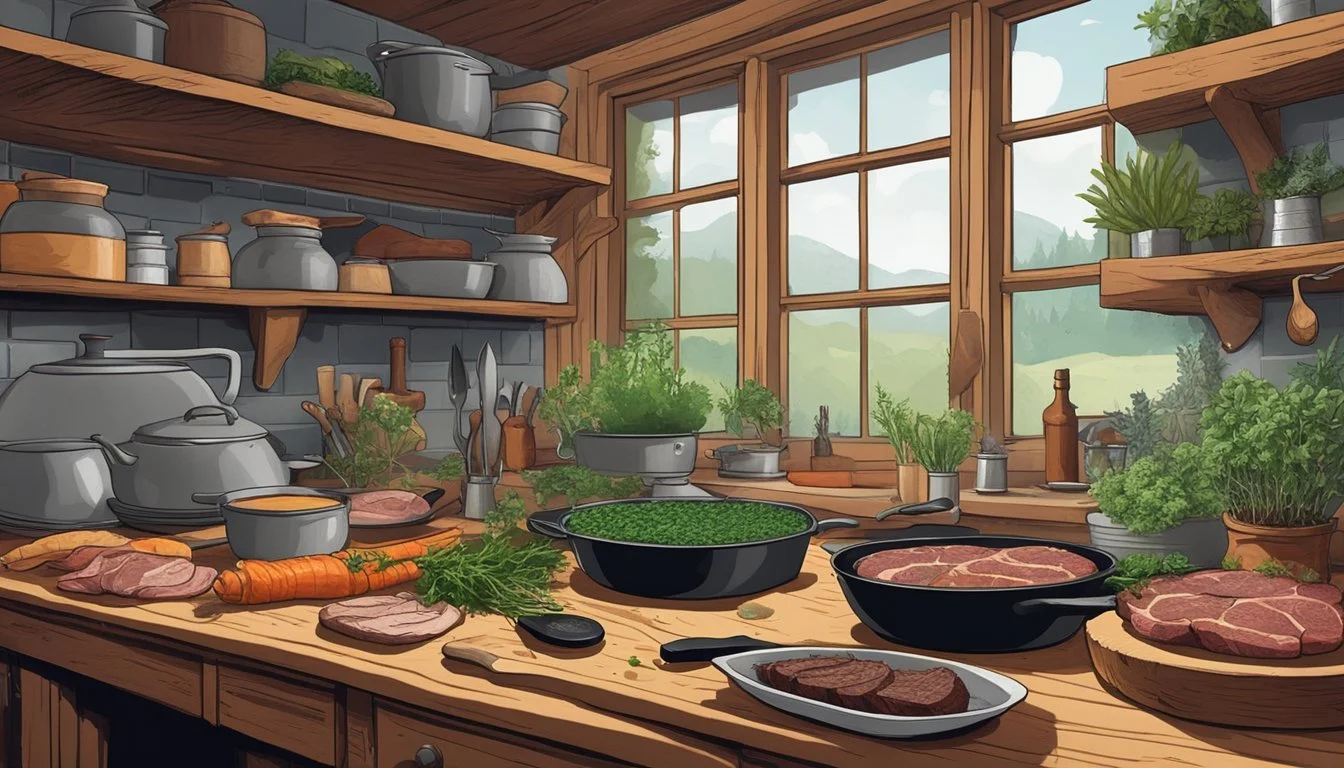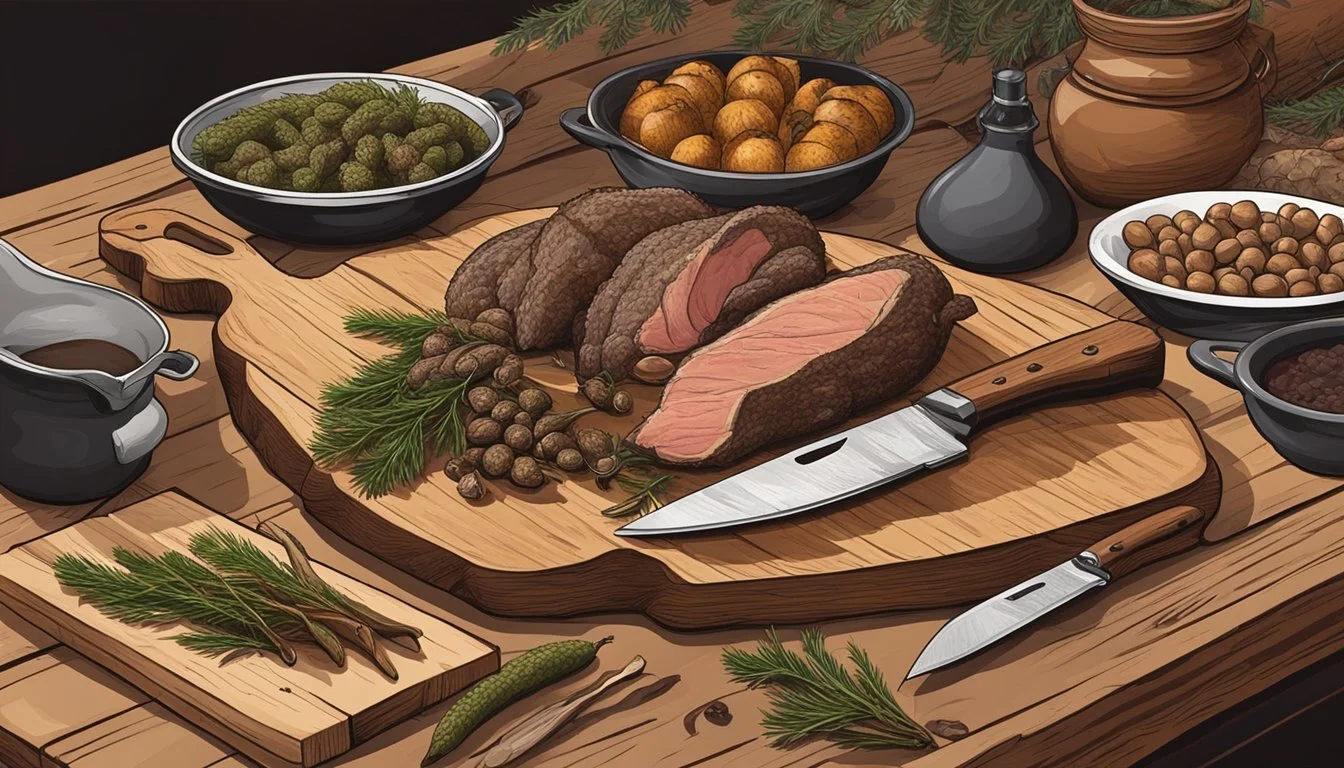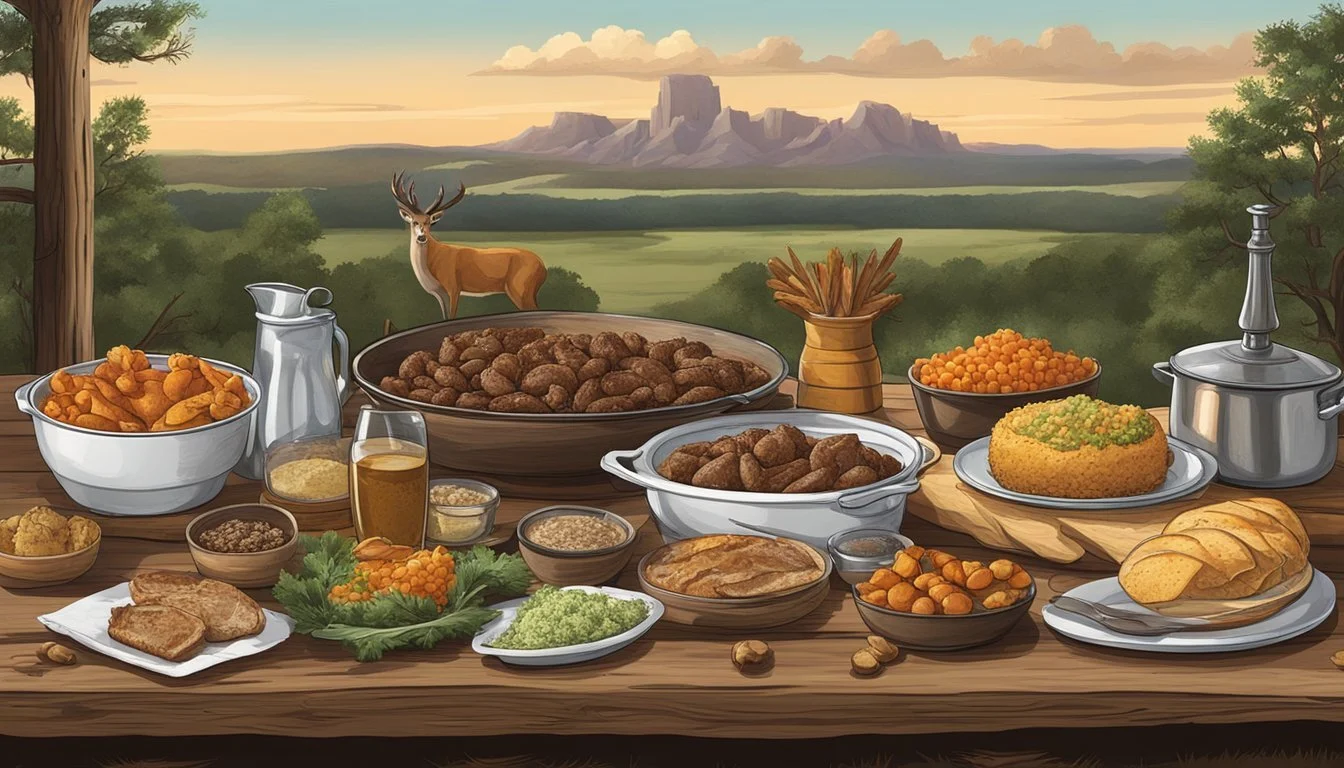How to Prepare Texas Wild Game Dishes
A Guide to Cooking Like a Local
Preparing wild game dishes is an art steeped in Texas tradition, reflecting the state’s rich outdoor culture. Many Texans treasure the adventure of hunting and the subsequent joy of cooking their catch. From deer and wild boar to waterfowl, the variety of game available in Texas provides an extensive playground for culinary exploration. These meats are not only valued for their unique flavors but also for being sustainable and healthy sources of protein.
Cooking Texas wild game demands specific techniques to enhance its natural flavors while ensuring tenderness and juiciness. Techniques such as braising and pot-roasting are often recommended, especially for tougher cuts of meat. These methods allow the robust flavors of game to meld harmoniously with the added herbs, spices, and vegetables.
To truly appreciate the unique character of Texas game, it’s critical to understand both the source of the meat and the ingredients that accompany it. Pairings with local produce and the right seasoning can elevate the taste experience. As the popularity of field-to-table dining grows, more home cooks and chefs alike are embracing the adventure of preparing and enjoying Texas wild game dishes.
Understanding Texas Wild Game
Texas boasts a diverse range of wild game, offering unique culinary experiences for enthusiasts. Among the favored big game species, deer and wild boar stand out as prominent in Texan cuisine. Venison (What wine goes well with venison?), which refers to the meat of deer, is highly sought after for its rich flavor and low-fat content. Texans often prepare venison as steaks, roasts, or ground meat.
In addition to deer, smaller game birds, like quail (What wine goes well with quail?) and wild turkey, often grace the tables of Texan diners. These birds, known for their distinct tastes, require careful preparation to preserve their delicate flavor and tender meat. Antelope also roam in some parts of Texas, though they are less common. Their meat is similar to venison in terms of taste and texture.
Here's a brief overview of popular Texas wild game types:
Venison: Lean red meat (What wine goes well with red meat?), versatile in dishes.
Wild Boar: Rich and nutty flavor, preferred in hearty meals.
Wild Turkey: Dark meat, known for its gamey taste.
Quail: Small bird with tender meat.
Bear meat is not commonly found in Texas and therefore does not play a significant role in local wild game cuisine. When preparing wild game, it is essential to understand the specific qualities of each type to ensure proper cooking techniques are applied. This understanding helps maintain the integrity of the flavors and textures inherent to each game species.
Hunting and Procuring Game
Preparing Texas wild game dishes begins with understanding the intricacies of hunting and procuring game. Knowledge of local regulations, optimal seasons, sustainability, and having the right equipment are vital for any successful hunt in Texas.
Licensing and Regulations
In Texas, hunters must obtain the appropriate licensing before embarking on a hunt. This is a critical legal requirement overseen by the Texas Parks & Wildlife Department (TPWD). Hunting licenses are mandatory and vary depending on the game species, with separate tags for animals like deer and turkey.
Hunting Seasons
Texas is divided into various zones, each with its own designated hunting seasons to ensure populations thrive. For example:
East Texas: Deer season typically runs from October to January.
West Texas: Offers unique opportunities, such as sandhill crane, with specific dates set each year.
Hunting outside these seasons is prohibited to maintain ecological balance.
Sustainable Practices
Sustainability is paramount in Texas hunting culture. Hunters are encouraged to adhere to bag limits to prevent overhunting. Selective harvest techniques are practiced, focusing on older animals and balanced sex ratios within herds.
Equipment and Gear
Suitable gear and equipment are essential for a successful hunt. Essentials include:
Camouflage clothing for stealth
Durable boots for traversing diverse Texas terrains
Firearms or bows tailored to the game being hunted
Each piece of equipment should be chosen with the environment of East or West Texas in mind, considering aspects like vegetation and climate.
Preparation for Cooking
Proper preparation is crucial for enhancing the flavor and texture of Texas wild game. This involves a series of steps that guarantee the meat is safe to eat, tender, and infused with flavor.
Field Dressing
Field dressing is the first step in game meat preparation. This process involves removing the entrails to prevent contamination and preserve meat quality. The key is to do this as soon as the game is harvested. A precise incision from the sternum to the bottom of the game animal is required, ensuring one does not puncture the intestines or stomach.
Aging and Tenderizing
Aging game meat is essential for breaking down muscle fibers, resulting in more tender meat. To age wild game meat:
Hang the carcass in a cool, dry place.
Maintain a temperature around 34-37 degrees Fahrenheit.
Age large game like deer for 7-14 days; smaller game should not age as long due to their less dense muscle fibers.
Tenderizing techniques can include:
Physical methods: such as pounding or using a meat tenderizer tool.
Enzymatic solutions: including commercially available tenderizers that help to break down proteins in the meat.
It's important to trim excess fat, as wild game fat can have an unpleasant flavor.
Marinating
Marinating wild game adds flavor and helps further tenderize the meat. To create an effective marinade:
Combine acidic components like vinegar or citrus juices with oils, herbs, and spices.
Allow the meat to marinate in the refrigerator for several hours, or ideally, overnight to infuse the flavors.
Acidic components in marinades help in breaking down tough muscles fibers, which is particularly beneficial for wild game known for its leanness and density.
Cooking Techniques
When preparing Texas wild game dishes, mastering varied cooking techniques is essential to enhance the flavors and achieve the desired doneness. Each technique offers a unique approach to handling different types of game.
Grilling and Barbecuing
Grilling is a popular method for cooking wild game in Texas, perfect for smaller, tender cuts of meat. It involves high heat and short cooking times. Key steps include:
Pre-heating the grill to a high temperature.
Seasoning the game meat well before placing it on the grill.
Using a meat thermometer to ensure proper doneness, generally aiming for an internal temperature between 145°F to 160°F depending on the meat.
Barbecuing encompasses slow cooking over lower heat, ideally with the addition of wood chips for a smoky flavor. This is especially suitable for larger or tougher cuts that benefit from longer cooking times to become tender.
Roasting
Roasting involves cooking wild game in an oven at a consistent temperature. Typically, game birds and larger game roasts are well-suited for this method. Critical considerations include:
Preheating the oven to anywhere between 325°F to 350°F.
Browning the meat first can enhance flavor and texture.
Roasting until the meat reaches the proper internal temperature, checking with a thermometer.
Braising
Braising combines dry and moist cooking methods, perfect for tougher cuts that require tenderizing. Steps for braising:
Searing the meat in a hot pan with fat to develop a crust.
Adding a cooking liquid, such as a broth or wine, and aromatic vegetables.
Covering and cooking on low heat until the meat becomes tender, which can take several hours.
Slow Cooking and Smoking
Slow cooking and smoking are two methods that impart deep, complex flavors into wild game while ensuring that the meat remains moist and tender.
For slow cooking:
Game meat is often cooked at low temperatures, around 200°F to 225°F, in a slow cooker or a low oven.
Cooking can last for several hours, often involving a braising liquid.
Smoking involves:
Curing or seasoning the meat before exposing it to smoke from wood chips or charcoal.
Maintaining a steady temperature in the smoker, using a thermometer to monitor.
The process takes time, often several hours, to infuse the meat with smoky flavor while it cooks to the desired level of doneness.
Wild Game Recipes
In the heart of Texas, wild game dishes offer robust flavors and hearty meals, featuring venison chili and stew, succulent quail and turkey, as well as a variety of fresh fish recipes.
Venison Classics
Popular venison recipes in Texas include rich and hearty venison chili and venison stew. These dishes emphasize the tender and flavorful nature of the meat:
Venison Chili: A blend of ground venison, chili spices, tomatoes, and beans cooked slowly to meld flavors.
Venison Stew: A comforting meal with chunks of venison, potatoes, carrots, and onions in a savory broth.
Texas-Style Poultry
Quail and turkey stand out in the wild game cuisine of Texas. Both birds are prepared with local herbs and spices to enhance their natural taste:
Quail Tacos: Small, flavorful quail pieces served in soft tortillas with pico de gallo and avocado.
Whiskey-Glazed Wild Turkey Breast: Marinated with a Texan whiskey glaze that adds a sweet and savory dimension to the poultry.
Game Fish Favorites
Texans prize fresh fish from local waters, preparing dishes that highlight the fish's freshness and delicate flavors:
Grilled Bass: Seasoned with lemon and dill, then grilled to perfection to showcase its flaky texture.
Catfish Fry: Cornmeal-coated catfish, deep-fried until golden and served with a side of tangy tartar sauce.
Exotic Game Creations
For those with adventurous palates, Texas offers a range of exotic game dishes that incorporate unique meats:
Wild Boar Stew: Slow-cooked wild boar meat with a mix of root vegetables and a rich, wine-infused broth.
Sandhill Crane: Savored for its distinct flavor, often prepared with aromatic seasonings and cooked to highlight the meat's tenderness.
Pairings and Accompaniments
In preparing Texas wild game dishes, choosing the right pairings and accompaniments enhances the rich flavors of the meat. Thoughtfully selected vegetables, starches, grains, and sauces can transform your game into a well-rounded and satisfying meal.
Choosing the Right Vegetables
Vegetables add both color and nutrition to Texas wild game dishes. Bold and hearty options like roasted Brussels sprouts or sauteed kale stand up well to the robust flavors of game meats. Sweeter vegetables like butternut squash or glazed carrots can contrast and complement the savory notes in the meat. Incorporating regional staples such as corn, Texas caviar (black-eyed pea salsa), and grilled peppers also reflects the local cuisine.
Root Vegetables: Roasted or mashed to provide earthy flavors.
Green Vegetables: Sauteed or steamed to add a vibrant touch to the dish.
Squashes: Caramelized to bring out natural sweetness.
Starches and Grains
Starches and grains are essential in providing balance and substance. They absorb the juices and gravies, giving each bite a perfect combination of flavors and textures. Cornbread and biscuits are traditional options that offer a comforting feel. Wild rice or quinoa can be a lighter alternative, while creamy mashed potatoes or baked sweet potatoes are always a crowd-pleaser. Don't forget the Texas staple of tortillas, which can be used to scoop up the game and its accompaniments effectively.
Cornbread: A classic choice for a hearty, Southern touch.
Potatoes: Baked, mashed, or roasted to complement the game's richness.
Grains: Wild rice or quinoa for a healthier twist.
Sauces and Gravies
Sauces and gravies elevate Texas wild game by adding moisture and tying all the elements together with a burst of flavor. A rich red wine sauce or a savory gravy made with juices from the meat and a touch of tomato paste for depth is a perfect choice. For a more Texan flair, one can opt for spicy salsa or a sauce featuring local chiles. A dollop of sour cream can also cool down and balance spicier dishes.
Red Wine Sauce: For a sophisticated, deep flavor.
Gravy: Made from pan-drippings to enhance the meat's natural tastes.
Salsa: Spicy or mild to infuse the dish with a Texan essence.
Storing and Preserving Game
Proper storage and preservation are crucial for maintaining the quality and safety of wild game meat. The methods employed can significantly affect the texture, flavor, and healthiness of the meat when it's time to prepare it.
Freezing and Thawing
Freezing: Ensure Proper Preparation
Clean: Meat must be cleaned and processed promptly after the hunt.
Package: Use airtight packaging materials such as freezer bags, vacuum sealers, or heavy-duty aluminum foil.
Step Description Rapid Cooling Cool the meat to 40°F as quickly as possible to prevent bacterial growth. Portioning Divide the meat into meal-sized portions to avoid thawing more than necessary. Labeling Clearly label packages with the date and type of game to keep track of freshness.
Thawing:
Always thaw game meat in the refrigerator or cold water, never at room temperature, to maintain a safe and even thawing process.
Canning and Preserving
Canning: Safeguarding Flavors and Nutrients
Pressure Canning: Wild game should be pressure canned to ensure the destruction of bacteria, due to its dense nature and low acidity.
Jar Selection: Use high-quality jars designated for canning to prevent breakage or seal failures.
Preserving: Prepare with Care
Salting, smoking, and pickling are alternative preservation methods.
These methods require skill and strict adherence to safety standards to ensure the meat remains consumable and healthy.
By following strict guidelines for freezing, thawing, and canning, one can ensure wild game meat remains both healthy and delicious until it is ready to be prepared in the kitchen.
Health and Nutrition
When preparing Texas wild game dishes, health and nutrition are pivotal. Wild game meat, such as venison, is typically leaner than domesticated red meat, making it a healthier choice for individuals mindful of their fat intake. Venison is a good source of protein and is rich in iron and B vitamins, essential nutrients for maintaining energy levels and overall health.
Nutrient Comparison between Venison and Common Red Meats:
Nutrient Venison (per 100g) Beef (per 100g) Pork (per 100g) Calories 125 250 310 Fat 2g 15g 20g Cholesterol 60mg 70mg 80mg Protein 26g 25g 27g
Data sourced from USDA Food Composition Databases
Because wild game animals are typically more active and graze on a natural diet, their meat contains a balance of omega-3 and omega-6 fatty acids. However, consumers should be aware that the leanness of game meat requires different cooking methods to ensure that dishes remain moist and palatable.
When handling and cooking wild game, adhering to food safety principles is critical to reducing the risk of food poisoning. It's important to:
Wash hands and surfaces that come into contact with raw game meat thoroughly.
Separate raw game meat from other foods to prevent cross-contamination.
Cook game to safe temperatures; for whole cuts of meat, USDA recommends an internal temperature of 145°F, followed by a rest time of at least 3 minutes.
Refrigerate leftovers promptly to prevent bacterial growth.
In summary, incorporating wild game into a Texan diet can contribute to a balanced, healthy eating plan when prepared with proper cooking methods and safety protocols.
Creating a Culinary Adventure
Texas wild game dishes offer an adventure in every bite, marrying the untamed flavors of the outdoors with culinary finesse. Whether one chooses to cook at a campsite or present a gourmet platter, the experience is a journey through taste and tradition.
Campsite Cooking
Camping offers an excellent opportunity for chefs to explore the rustic and hearty aspects of wild game cooking. Utilizing a campfire or portable stove, one can create a memorable meal under the open sky. Key tools include a cast iron skillet and simple ingredients that let the game's natural flavors shine.
Cook over an open flame for a smoky accent
Utilize local herbs and spices found in the Texas wilderness
Game in Gourmet Dining
Elevating game to a gourmet level requires finesse and a deeper understanding of flavors. A chef who specializes in wild game can bring out complex taste profiles that complement the meat's richness.
Pair with full-bodied wines like a robust Zinfandel
Serve with sides that balance the game's intensity, such as roasted root vegetables
Through careful preparation and an understanding of their unique flavors, one can transform wild game into culinary masterpieces fit for any dining occasion.
Cultural Significance of Game in Texas
In Texas, game such as deer, wild boar, and birds represent not only a source of sustenance but also a touchstone of cultural heritage. The tradition of hunting and game preparation dates back to the indigenous populations and has been sustained and evolved through the influence of settlers from various cultures, including those from Louisiana and beyond.
Tradition and Community:
The act of hunting game has historically been a communal activity that strengthens social bonds. It is a time-honored tradition where knowledge and skills are passed down through generations, fostering a respect for the land and its resources.
Texas's Biodiversity:
Deer
Wild boar
Quail
Turkey
Rabbit
Duck
Culinary Influences:
Texas’s cuisine has been enriched by the inclusion of game, influencing local dishes and cooking methods.
The integration of Louisiana's culinary techniques, such as Cajun and Creole flavors, has further diversified the approach to game preparation.
Health and Sustainability:
Game meat is often leaner and seen as a healthy alternative to commercially farmed meat. It also offers an ecologically responsible option, as hunters contribute to wildlife management and conservation efforts.
In conclusion, game in Texas carries significant cultural weight, embodying the resilience and collaboration fundamental to the state's identity. It continues to be a staple in Texan cuisine, revered for its history and the rich, distinctive flavors it brings to the table.
Etiquette and Best Practices
When preparing Texas wild game, it's essential to understand the etiquette and best practices that ensure a flavorful and respectful approach to these unique proteins. As hunters procure their game, ethical considerations come into play. They should ensure they follow local hunting regulations and use humane methods.
Preparation:
Safe handling: Game should be properly field-dressed, refrigerated, or frozen promptly.
Marinating: Tough cuts benefit from marination to tenderize the meat.
Choosing the Right Type of Game: Texas is abundant with a variety of wild game; each requires specialized preparation techniques.
Game Type Cooking Note Wild Boar Robust flavor, often requires marination or slow cooking. Venison Lean meat, careful not to overcook. Quail Delicate meat, quick cooking methods are preferable.
Cooking:
Don’t overcook: Game is typically lean, making it prone to drying out.
Rest: Allow meat to rest after cooking for juices to redistribute.
Tool Usage:
They should use sharp knives for clean cuts and easier butchering.
Slow cookers and pressure cookers are ideal for tenderizing tough cuts.
Cooks and chefs should respect the animal by minimizing waste; creative recipes that use lesser-known parts can be both delicious and conscientious. Additionally, diners should be aware that the flavors of wild game can be quite different from farm-raised meats—expect richer, often gamier taste notes.

